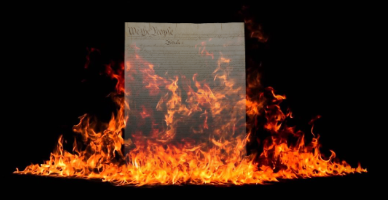
I mentioned this earlier, but hadn’t done a whole post about it yet because, well, we apparently live in a world where the Supreme Court ordering the end of meaningful judicial review by any lower courts isn’t the main story?
That is profoundly depressing.
But it’s true: at the moment, the progress of the coup’s Big Bad Bill is more urgent.
The excise tax provision that was the motivation for yesterday’s post has been amended out, by the way.
Still no word on how it got into the Bill of course; that’s still a mystery.
But let’s set that aside for the moment and look at the possible end of nationwide orders against the State.
One of the most important functions of the courts is to restrain the actions of the legislative and executive branches of the State; it’s one of our once-lauded “checks and balances”.
It’s important.
The way this should work is that any citizen should be able to argue to a court that the State’s laws or actions violate the Constitution or other laws, and if the court agrees it orders the State to stop it and sets up compensation for anyone who was affected by the State’s illegal behavior.
It can even order ongoing oversight to make sure the State doesn’t do it again.
U.S. courts hate dealing with abstract questions, though, so the way this actually works is that anyone directly (which to the courts means financially) affected by a State action can argue to a court that the State’s laws or actions violate the Constitution or other laws, and if the court agrees it orders the State to stop it and can consider compensation for the petitioner.
The really important part there is that the court can order the State to stop acting illegally.
And that’s the part the Supreme Court tried to kill with its order last Friday.
Rather than ordering the State to stop its illegal behavior, says the Supreme Court, lower courts are only allowed to order the State to stop behaving illegally towards the actual petitioner.
Everyone else is on their own.
This effectively allows the State to act illegally all it wants to everyone else until a higher court can rule on the issue, which almost always takes years to happen.
It is, quite literally, a license for the State to violate the Constitution and laws of the country.
With this license, the State could do anything it pleases, unless specifically ordered not to in a specific case.
The district courts would only be allowed to stop them for individual petitioners, or within a single circuit on appeal and nationwide only by the Supreme Court itself.
This is, as lawyers like to say, absurd on its face. Rearranging the powers of the courts this way is unsupportable even with the Supreme Court’s new, also absurd, “history and tradition” standard.
U.S. courts have a long history and tradition of ordering the State to halt illegal activities or not enforce unconstitutional laws.
It is, in fact, a really important part of what the courts are for.
Of course, none of the district or circuit courts can be forced in any way to follow this absurd standard.
The only way the Supreme Court can make this stick is if the lower courts go along with it, which they absolutely should not do.
Let the Supreme Court overrule the lower courts’ orders one by one, if they choose to, but the lower courts have an obligation to ignore this lunacy and continue to order the State to stop when it breaks the law.
It’s their job, and a fundamental role of all courts in the U.S., and that’s not something the Supreme Court can change.
- You Should Read This: The 2025 Hater’s Guide To The Williams-Sonoma Catalog - 2025-12-22
- Secession: What A ****show - 2025-12-19
- Framing For Goblins: Say Your Right Words - 2025-12-18
- Plenary Power Rangers: Steven Miller Says The Quiet Part Loud Again
- Failed Constitution Check: The Professoriat Weighs In
- The Old Dog Needs Some New Tricks: Learning From The Laboratories Of Democracy
- No Appeal: When The Supreme Court Goes Bad
- High Crimes And Misdemeanors: Everything He Does Is Illegal, So Is He Really President?
